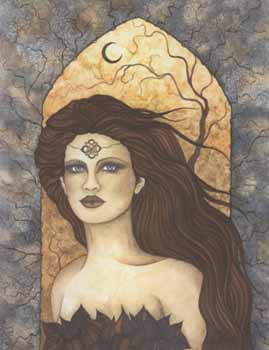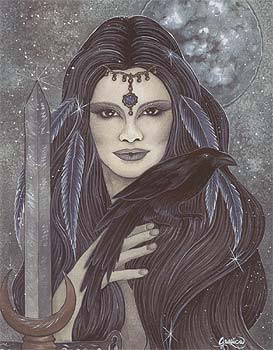



| Brighid - 'Mother of the Irish Gods' by Jessica Galbreth.  View more of her beautiful artwork on her site www.enchanted-art.com/ |
| Her shrines were found everywhere, for everywhere is her abode - near the hearth, at the sacred well or spring that provides water for drink and healing, in the ancient grove of trees forming Nature's cathedral, in the deepest cave, on the highest mountain. The plants and animals, the moon, sun and stars, the river that flows to the sea and the ocean itself; all were her domain. All were sacred to the Goddess. All were recognized as forming part of the Great Mother and therefore as kin. Adele Getty, Goddess |
| The Morrigan - 'Celtic Goddess of War and Death' by Jessica Galbreth.  View more of her beautiful artwork on her site www.enchanted-art.com/ |
